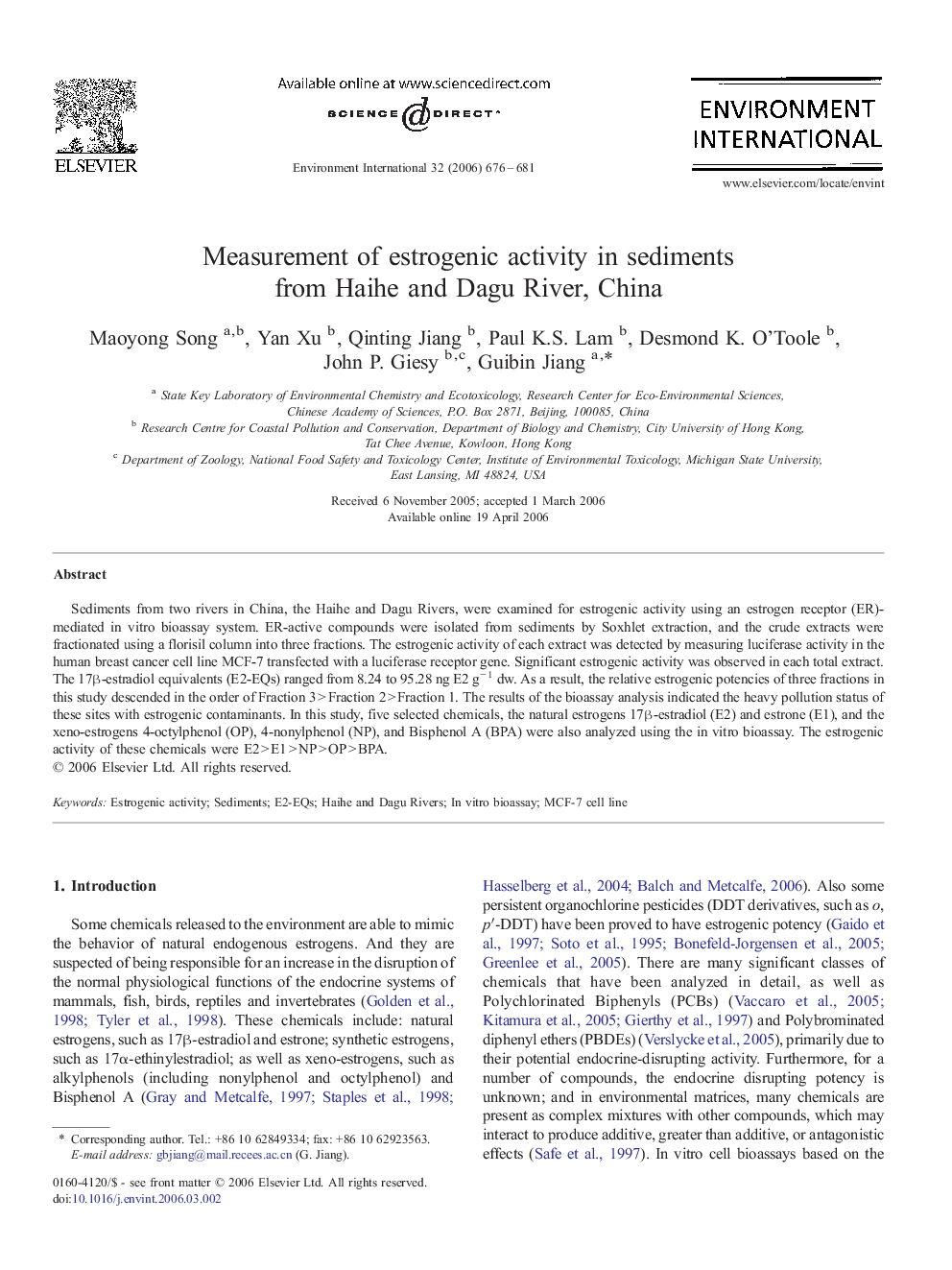| Article ID | Journal | Published Year | Pages | File Type |
|---|---|---|---|---|
| 4423951 | Environment International | 2006 | 6 Pages |
Sediments from two rivers in China, the Haihe and Dagu Rivers, were examined for estrogenic activity using an estrogen receptor (ER)-mediated in vitro bioassay system. ER-active compounds were isolated from sediments by Soxhlet extraction, and the crude extracts were fractionated using a florisil column into three fractions. The estrogenic activity of each extract was detected by measuring luciferase activity in the human breast cancer cell line MCF-7 transfected with a luciferase receptor gene. Significant estrogenic activity was observed in each total extract. The 17β-estradiol equivalents (E2-EQs) ranged from 8.24 to 95.28 ng E2 g− 1 dw. As a result, the relative estrogenic potencies of three fractions in this study descended in the order of Fraction 3 > Fraction 2 > Fraction 1. The results of the bioassay analysis indicated the heavy pollution status of these sites with estrogenic contaminants. In this study, five selected chemicals, the natural estrogens 17β-estradiol (E2) and estrone (E1), and the xeno-estrogens 4-octylphenol (OP), 4-nonylphenol (NP), and Bisphenol A (BPA) were also analyzed using the in vitro bioassay. The estrogenic activity of these chemicals were E2 > E1 > NP > OP > BPA.
